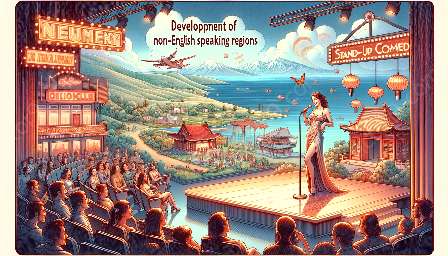In the world of stand-up comedy, cultural differences play a significant role in shaping the humor, style, and content of performances. From observational comedy to political satire, stand-up comedy varies widely across different countries, reflecting cultural influences and societal norms. This article delves into the key cultural differences in stand-up comedy, highlighting the unique aspects of this art form in various regions.
Cultural Variations in Stand-Up Comedy
United States: In the US, stand-up comedy is often characterized by a focus on personal experiences, storytelling, and self-deprecating humor. Comedians often tackle social and political issues, offering sharp commentary and satire on contemporary events. The comedic style in the US reflects a tradition of free speech and individual expression, with a wide range of comedic genres and approaches.
United Kingdom: British stand-up comedy is known for its wit, sarcasm, and clever wordplay. Comedians in the UK often explore dry humor, irony, and absurdity, creating a style that is distinctively British. Political satire and social commentary are also prevalent in British comedy, reflecting the country's rich history of political activism and social criticism.
Australia: Australian stand-up comedy is characterized by a laid-back, irreverent approach often accompanied by self-mockery and a relaxed sense of humor. Comedians in Australia often draw on everyday experiences, colloquial language, and a casual, down-to-earth style of delivery. The humor in Australian comedy reflects the country's emphasis on camaraderie and the embrace of laconic, relaxed attitudes.
Cross-Cultural Differences in Stand-Up Comedy
When examining stand-up comedy from a cross-cultural perspective, it becomes evident that cultural differences influence comedic styles and content. From language nuances and cultural references to societal taboos and norms, each country's comedic landscape reflects the unique fabric of its culture. Comedians often navigate these cross-cultural differences by adjusting their material and delivery to resonate with diverse audiences, leading to variations in comedic performance across borders.
In addition to language and cultural references, the social and political climate of a country also shapes stand-up comedy. Comedians may need to adapt their material to address local issues and sensitivities, ensuring that their humor resonates with audiences while respecting cultural nuances and sensitivities.
Conclusion
Stand-up comedy is a vibrant and dynamic form of entertainment that reflects the rich diversity of cultures across the globe. By understanding the key cultural differences in stand-up comedy, audiences can appreciate the nuances and intricacies of comedic performances from different countries, gaining insight into the unique ways humor manifests in diverse cultural contexts.
























